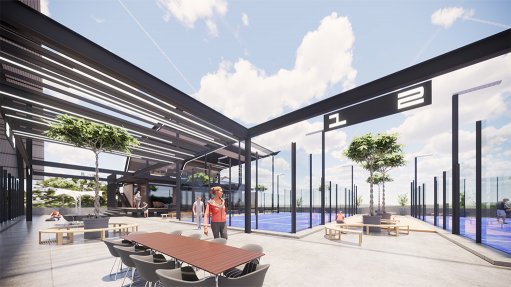Airbus unveils new wing-tip technology
Only days before the recent Paris Air Show, Europe-based giant aerospace group Airbus announced that it had successfully flown a remote-controlled scale-model aircraft (based on the Airbus A321 single-aisle airliner and designated AlbatrossOne) fitted with flapping wing tips.
This is the first time that any category of aircraft fitted with such wing tips has been flown. And on the first day of the Paris Air Show, it launched the latest version of its A321neo (new engine option) single-aisle airliner (itself the largest model in the A320neo family). This is the A321XLR – XLR standing for extra-long range.
The flapping wing-tips technology is technically called a ‘semi-aeroelastic hinge’ and could, the company said, revolutionise the design of aircraft wings. It is intended to reduce drag, reduce the overall weight of the wings, and counter the effects of wind gusts and turbulence.
“While hinged wing tips are not new – military jets employ them to allow greater storage capacity in aircraft carriers – the Airbus demonstrator is the first aircraft to trial in-flight, freely flapping wing tips to relieve the effects of wind gust and turbulence,” reported Tom Wilson, an engineer based at Airbus’s Filton production site in the UK. “We drew inspiration from nature – the albatross marine bird locks its wings at the shoulder for long- distance soaring but unlocks them when wind gusts occur or manoeuvring is required.”
The AlbatrossOne was developed over 20 months, and its initial flight test programme was completed in February. This programme checked the aircraft’s stability, with both locked and fully unlocked wing tips. “The next step is to conduct further tests to combine the two modes, allowing the wing tips to unlock during flight and to examine the transition,” explained James Kirk, also an engineer at Filton.
“The AlbatrossOne model will explore the benefits of unlockable, freely flapping wing tips – accounting for up to a third of the length of the wing – to react autonomously during in-flight turbulence and lessen the load on the wing at its base, so reducing the need for heavily reinforced wing boxes,” added Wilson. It has been built using glass-fibre-reinforced polymers and carbon fibre, and includes components made using additive manufacturing (more popularly called three-dimensional printing).
The A321XLR, which will enter service in 2023, will have a range of up to 4 700 nautical miles (about 8 700 km), 15% greater than the range of the current A321LR (long-range) version. It will also deliver 30% less fuel consumption per seat than previous-generation competitor types.
“With this added range, airlines will be able to operate a lower-cost single-aisle aircraft on longer and less heavily travelled routes – many of which can only now be served by larger and less efficient wide-body aircraft,” explained Airbus in its press release. “This will enable operators to open new worldwide routes, such as India to Europe or China to Australia, as well as further extending the family’s non-stop reach on direct transatlantic flights between continental Europe and the Americas.”
The A321XLR, which had orders from five different customers announced during the first two days of the Paris event, has been designed to have minimal changes and maximum commonality with the A321LR and the wider A320neo aircraft family. The changes that have been made are those required to provide the extra-long range and an increased revenue payload.
The key difference between the A321XLR and the A321LR is the the fitting of a new, permanent, rear centre (fuel) tank (RCT), in place of several optional additional centre tanks (ACTs). The RCT holds more fuel than the ACTs but occupies a smaller volume in the cargo hold. This means that the A321XLR has more volume for undercabin cargo and luggage on long routes.
Another important difference is that the A321XLR has a modified undercarriage to cope with the aircraft’s increased maximum takeoff weight of 101 t. It also has an optimised wing trailing edge flap configuration to maintain the same engine thrust and takeoff requirements as those of the A321neo.
Comments
Announcements
What's On
Subscribe to improve your user experience...
Option 1 (equivalent of R125 a month):
Receive a weekly copy of Creamer Media's Engineering News & Mining Weekly magazine
(print copy for those in South Africa and e-magazine for those outside of South Africa)
Receive daily email newsletters
Access to full search results
Access archive of magazine back copies
Access to Projects in Progress
Access to ONE Research Report of your choice in PDF format
Option 2 (equivalent of R375 a month):
All benefits from Option 1
PLUS
Access to Creamer Media's Research Channel Africa for ALL Research Reports, in PDF format, on various industrial and mining sectors
including Electricity; Water; Energy Transition; Hydrogen; Roads, Rail and Ports; Coal; Gold; Platinum; Battery Metals; etc.
Already a subscriber?
Forgotten your password?
Receive weekly copy of Creamer Media's Engineering News & Mining Weekly magazine (print copy for those in South Africa and e-magazine for those outside of South Africa)
➕
Recieve daily email newsletters
➕
Access to full search results
➕
Access archive of magazine back copies
➕
Access to Projects in Progress
➕
Access to ONE Research Report of your choice in PDF format
RESEARCH CHANNEL AFRICA
R4500 (equivalent of R375 a month)
SUBSCRIBEAll benefits from Option 1
➕
Access to Creamer Media's Research Channel Africa for ALL Research Reports on various industrial and mining sectors, in PDF format, including on:
Electricity
➕
Water
➕
Energy Transition
➕
Hydrogen
➕
Roads, Rail and Ports
➕
Coal
➕
Gold
➕
Platinum
➕
Battery Metals
➕
etc.
Receive all benefits from Option 1 or Option 2 delivered to numerous people at your company
➕
Multiple User names and Passwords for simultaneous log-ins
➕
Intranet integration access to all in your organisation


















